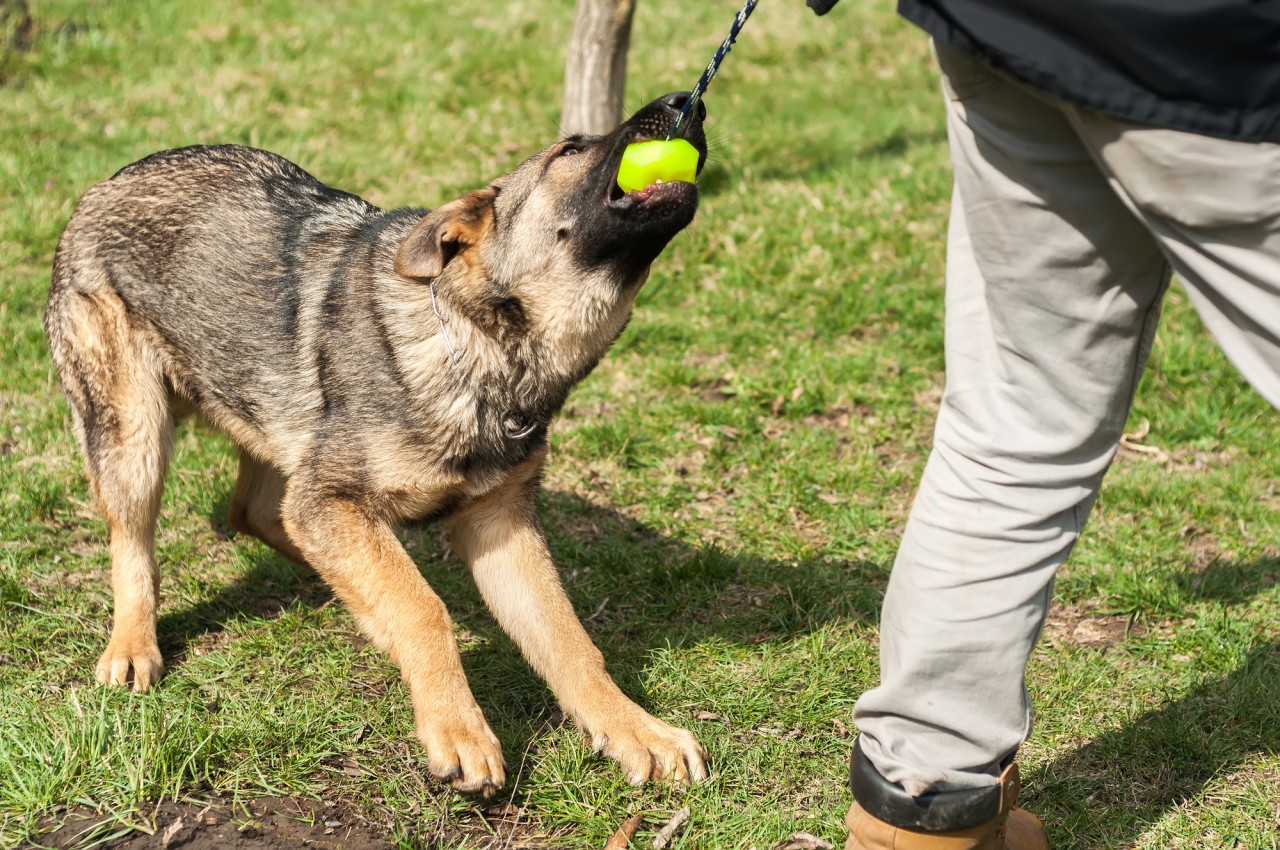Handler Training for Working Large, High-drive Dogs
There are a number of factors that we need to take into consideration when we're thinking about handling large dogs without compromising our own bodies. I am looking forward to sharing with you how I coach my large dog clients so they can interact safely, comfortably and effectively.
The first is general safety and injury prevention because large high-drive dogs put a lot of force and torque on our bodies. In particular our spine, knees and shoulders. I'm going to use the example of an intense tugging session throughout this post, although this same information will help with carrying crates, helper work, being pulled on a leash etc.
To safely engage in a solid tugging session you need to have good posterior strength, posterior just means the backside of your body. My large dog clients have more posterior work programmed because of the force that will be happening primarily in front of them that needs to be accounted for. Think hamstrings, glutes, intelligent and supportive core work etc. It goes way beyond planks!
Choosing Handler-Friendly Toys for Play with Big Dogs
On a brief side note, I had a conversation with Shade Whitesel about this and she graciously provided some guidance about toy selection. Her suggestion for handlers having issues was to consider a toy on a bungee, or a toy with some give like a puller, to absorb some of the force. Further to that, a toy on a long bungee will save you from bending at the waist.
Building Muscle Memory in Your Hips and Legs... So you can brace!
The first step is to build muscle memory and strength in your hips and legs so you can drop into a solid, familiar and strong position so you can brace yourself against the dog. I always start with foundations, and even if you know how to squat run through these quick drills! A little polishing goes a long way.
First we'll learn, or review, how to position your pelvis, then build strength and familiarity with the pattern in the glute bridge, and then transfer these concepts to the squat. I like to use a band in the beginning stages as it gives you forces the glutes to work harder and leaves some of the guesswork out of the equation. This process is simply repetition and is worth every single rep, I promise.
Building Core Strength... For when they twist and jerk!
They may twist and jerk as they fight so it's important to think about how we can use the abdomen to rotate and control them, and just as important, to stop rotation or to brace ourselves. Again, this is a "tip of the iceberg" sample of the core work that I deploy with my large dog handlers. These can be done with a band or a cable system.
Pulling Exercises for Handlers of Big Dogs
My large dog handlers also do a lot of pulling exercises, either with bands or dumbbells. They also do a lot of half-kneeling rowing movements and exercises that combine the abdominals and the back at the same time. Ideally in a position that requires balance. You can think about this as 'pairing' recruitment patterns.
Here are a few of my favorite exercises to start with that will build this strength in transferrable ways for my large dog handlers.
Injury Prevention for Handlers of Big Dogs!
The last thing to say about this is that injuries and pulling muscles can, and realistically will, happen when you are working large high-drive dogs. Prevention is Queen here!! Getting a targeted mobility routine on tap that is used regularly is going to save you a lot of challenges in the future, especially with the hips, back and shoulders. What you don't want is to reach the end of your mobility while you have force being applied to your body. That is a recipe for an injury!
Yoga can do the trick, and also it isn't targeted so will take significantly more time and won't necessarily address your specific concerns. These stretches are the basics to prepare you for handling large dogs.
The number one thing I've learned about dog handlers, and being one myself, is that we're a busy bunch. Condensing fitness efforts into exclusively necessary, and nothing extra is the key to the majority of my handling clients achieving short and long-term success. These exercises and stretches are a great place to start.
By accepting you will be accessing a service provided by a third-party external to https://www.fenzidogsportsacademy.com/
